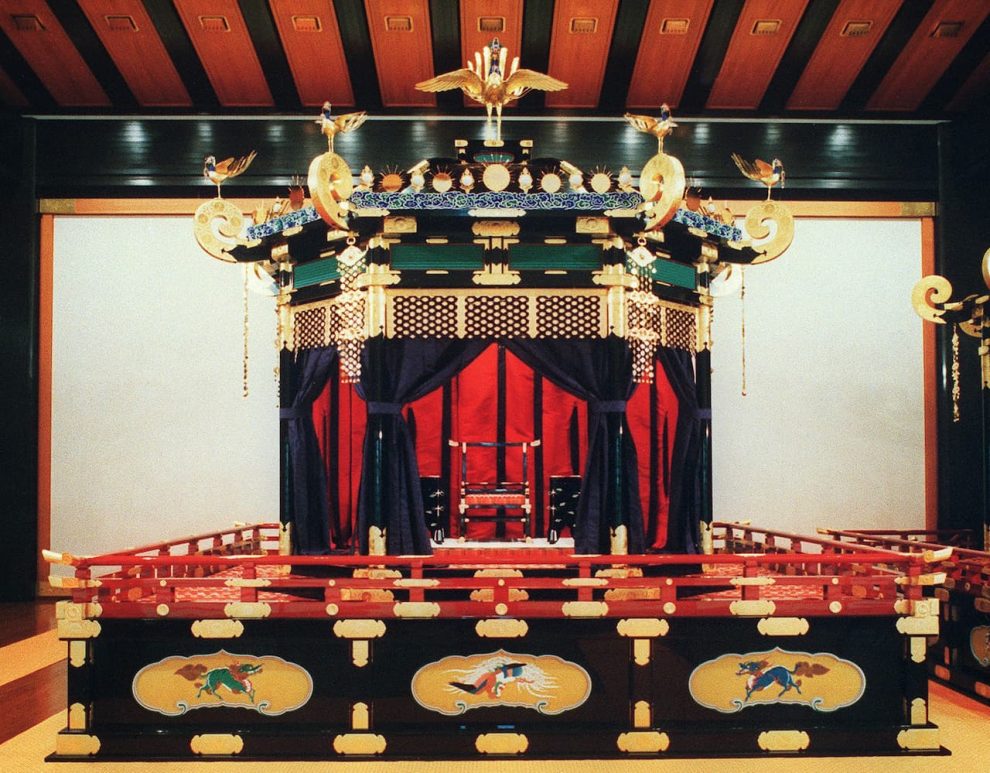If we were to ask which monarchy is the oldest in force in the world, most readers would probably say the English one without thinking too much about it. This would be a wrong answer. To find the correct answer, we must shift the focus of attention to the Far East, specifically to Japanwhose kōshitsu or Imperial House has been in charge of the country for more than two and a half millennia. Although it does not have an official name, it is informally known as the Yamato dynasty in reference to the Yamato Ōken. This was a tribal alliance of the homonymous region signed in the 4th century AD between the main noble families of the center and west of the archipelago, which in turn gives its name to the period of Japanese Antiquity.
“Records of the Three Kingdoms” is a Chinese work from the late 3rd century AD in which there is a record that the word Yamatai (or Yamatai-koku, that is, Yamatai country) was used for the first time. In the text, the term is used to refer to the domains of Himiko, a shaman queen who lived in the territory of present-day Japan.
The first known name for this country was Wa (a pejorative word meaning “dwarf”, because the idea that the Japanese were small in stature was widespread among Chinese and Koreans). The name corresponds to the Yayoi period (ranging from the Neolithic to the end of the Iron Age), which was followed by the Jōmon period (until approximately 300 BC).
No one knows exactly which region Yamatai corresponded to; There is not even certainty that this term is related to Yamato, an area that today corresponds to Naru prefecture. In any case, after the death of Queen Himiko, a king, whose name is unknown, took her place for a short period and was then ruled by Queen Toyo (also called Iyo), whom some historians consider the mother of Sujin, who He appears as the tenth emperor in traditional lists, although some researchers consider him legendary and identify him with the first, Jimmu, to whom his biographical data would have been transferred. Be that as it may, Yamatai later disappeared from historical records.
A century later, the Yamato Ōken or Yamato Royalty appeared, which covered the aforementioned Nara region in a context in which the Japanese archipelago was not yet unified and there were several centers of power.
To secure their position against the others, the Yamato agreed to vassalage with the Chinese Eastern Jin and Liu Song dynasties, also maintaining diplomatic relations with the Korean kingdoms of Baekje and Gaya. The dates are confusing, as is the information, which comes exclusively from Chinese sources.
One theory defends the coexistence of two simultaneous dynasties, the Yamataikoku in Kyushu and the Yamato kingdom in the Kinai region, although another proposes that there were more.
In this context, the so-called Kofun period began, which lasted until the 7th century, when it was succeeded by the Asuka period (538-711). At this time we can already speak of deep-rooted dynasties, with four powerful okimi or successive leaders: Seinei, Kenzo, Ninken and Buretsu, who began to break dependence on China. Focused on internal government, the dynasties went to war numerous times, as happened with the Keitai and the Kinmei, trying to achieve unification.
Despite the disputes of the time with China, the Yamato royalty still maintained itself culturally with the introduction of elements brought from this country, such as the calendar or Buddhism. However, at the end of the period the system collapsed due to the conflict between the Soga and Mononobe clans, the former Shinto and the latter Buddhist. This conflict ended in the proclamation of Prince Shotoku and Empress Suiko, who undertook a profound reform from which the so-called State of Ritsuryō emerged.
In 701 the name Japan (although pronounced “Yamato”) began to be used in various writings, also changing the position of ruler from okimi to tenno (emperor).
From this one hundred and one more followed one another, spread over the Asuka, Nara, Heian periods (from which the Fujiwara clan began to manipulate imperial power as sessho – regent – which would lead to the shogunate), Kamakura, Nambokucho and Edo, until entering the contemporary era (that of the Meiji Revolution), in which five others must be added, including the current one, Naruhito. The chronological spectrum goes from the year 711 BC (if we accept the legends) until today.
With this brief historical overview we can conclude that the Imperial House of Japan is the oldest continuous hereditary monarchy that exists. It constitutes “the symbol of the State and the unity of the people”, according to its constitution.
Although it is common to refer to it as the Yamato House, in reality it has no surname and each of its representatives gives a name to their reign. In this way, Mutsuhito has gone down in posterity as Meiji and Hirohito has gone down as Showa.
Its head is the tennō (emperor), whose imperial family includes the kōgō (empress), the jōkō (emperor emeritus), the kōtaishi (crown prince), the shinnō (infants) or the naishinnō (infants) and other various relatives.

Since 1947, when eleven shinnōke (branches of the family) were forced by the Rengōkokugun saikōshireikan (Supreme Commander of the Allied Powers, then General McArthur) to renounce their inheritance rights and women were excluded from the succession, updating A legal provision of 1889, the imperial family is reduced to the male descendants of Emperor Yosihito, son of the famous Mutsuhito and father of the no less famous Hirohito.
That is why he was succeeded by his eldest son Akihito and, after abdicating, by his eldest son Naruhito. However, Naruhito only has one daughter, Princess Aiko, so in principle, the first in the line of succession would be the emperor’s brother, Fumihito, prince of Akashio.
In 2005, the Japanese government studied a change that would allow Aiko to reign, but it was put on hold the following year, when she gave birth to Prince Hisahito, who is thus third in the line of succession, behind the aforementioned Fumihito and his son. , Hisahito.
This situation has been highly questioned in current times, in which gender issues have advanced a lot. It is also nonsense since, in ancient times (when you would least expect it, since these issues are supposed to evolve from back to front and not the other way around) there were eight women who reigned many years before. The last of them was Go-Sakuramachi, between 1740 and 1813.
Princesses lose their titles when they marry someone outside the imperial family, which is why it currently consists of only seventeen people.
















Add Comment